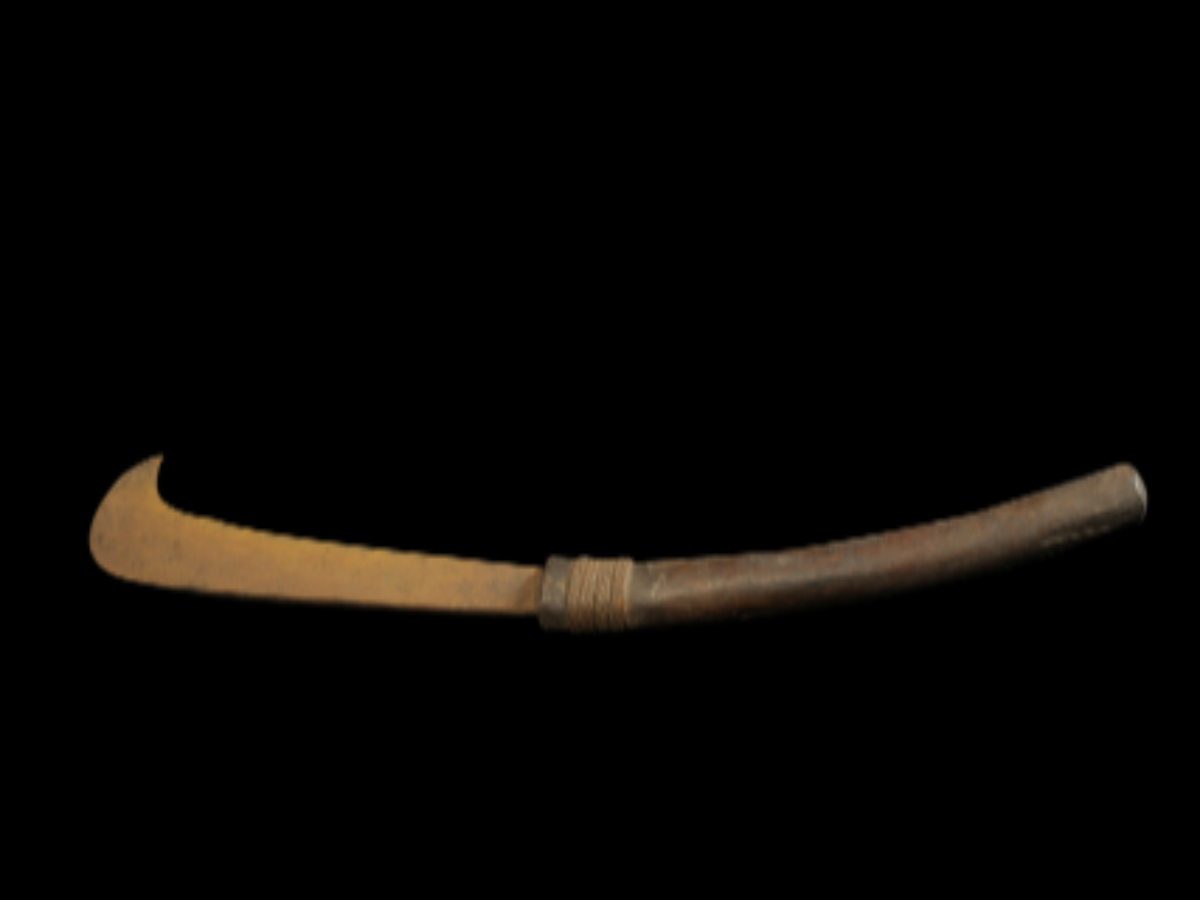State
Tribe Name
Art Type
short description
The Ka-Wait-Lyngngun is a traditional large dao such as used by the Khasi Tribe of Meghalaya, which epitomizes the tribe's wealth of craftsmanship and forest-based livelihood. Now in the tribal artefact collection at the Indian Museum, Kolkata, this dao has a long iron-blade slightly crescent from dhati, which gradually gets narrower toward the base. The overall shape of the dao thus is tapered. The dao is put into place to a long, cylinder-shaped wooden handle, which it bears firmly toward the blade end. There is an iron ferrule securing the end juncture of blade and handle, rendering it sturdy and durable under heavy use. Three plaited cane straps, too, were rolled about the handle and near the blade giving grip, strengthening and finishing the traditional appeal.
Thumbnail

Filter Postion
Left
Filter Background
Off
Theme
Filter Header Image

content
Image

description
The Ka-Wait-Lyngngun is a traditional large dao such as used by the Khasi Tribe of Meghalaya, which epitomizes the tribe's wealth of craftsmanship and forest-based livelihood. Now in the tribal artefact collection at the Indian Museum, Kolkata, this dao has a long iron-blade slightly crescent from dhati, which gradually gets narrower toward the base. The overall shape of the dao thus is tapered. The dao is put into place to a long, cylinder-shaped wooden handle, which it bears firmly toward the blade end. There is an iron ferrule securing the end juncture of blade and handle, rendering it sturdy and durable under heavy use. Three plaited cane straps, too, were rolled about the handle and near the blade giving grip, strengthening and finishing the traditional appeal.
The entire structure of the dao is almost convex; this adds to its ability to chop or slash. The Ka-Wait-Lyngngun was the very backbone of the normal Khasi tribal existence that it used within agriculture, forest clearing, and other daily chores. Practically, there is some reflection of a cultural identity where tool-making met ritual and tradition. Today, such tools are kept as testimony to the native engineering skills and environmental intelligence of the Khasi and as legacy to future generations to understand their cultural heritage.
The entire structure of the dao is almost convex; this adds to its ability to chop or slash. The Ka-Wait-Lyngngun was the very backbone of the normal Khasi tribal existence that it used within agriculture, forest clearing, and other daily chores. Practically, there is some reflection of a cultural identity where tool-making met ritual and tradition. Today, such tools are kept as testimony to the native engineering skills and environmental intelligence of the Khasi and as legacy to future generations to understand their cultural heritage.
Image Mode
landscape
promoted
On
Verified
Off
